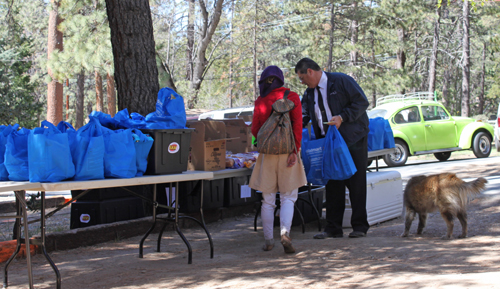The release of Cal Fire’s Fire Hazard Severity Zone maps is a positive step, but not a specific benefit to the local fire departments, according to Idyllwild Fire Chief Mark LaMont. The maps have value for fire departments, insurers, and property owners, but are not sufficient to address the issues of preventing the devastation from a wildfire.
The maps may alert potential homeowners of high-risk areas, and some potential buyers may avoid purchasing a home there. Nevertheless, many homes and structures already exist in these high severity zones.
“We don’t have a wildfire crisis,” LaMont stresses. “We have a crisis of planning and prevention.” And he believes the January conflagrations in Los Angeles County demonstrate this distinction.
For too many years, local governments have permitted, if not encouraged, home construction along and within the wildland urban interface. The U.S Fire Administration defines the WUI as the transition zone between unoccupied land and human development. It is the line, area or zone where structures and other human development meet or intermingle with undeveloped wildland or vegetative fuels.
This basically describes most of the Hill communities from Poppet Flats to Anza.
“These maps expose a hard truth: government has fumbled vegetation management, leaving the San Jacinto Wilderness around Idyllwild overloaded with fuel,” wrote Assemblyman Gregg Wallis (R Bermuda Dunes) in an email to the Town Crier.
Fires such as the recent Palisades and Eaton and others even less devastating create significant public attention and support for firefighting agencies. For example, St Sen. Mike McGuire (D-North Coast), President Pro Temp of the State Senate, and a bipartisan coalition introduced the “Fight for Firefighters Act,” Senate Bill 581, which will convert all of Cal Fire’s seasonal firefighters to full-time.
Benefits of greater year-round staffing will be all 356 Cal Fire engines would be fully operational 365 days per year, all 38 vegetation management crews would be fully operational, and CalFire’s helicopter bases will be fully staffed year-round.
All of these are important when fighting a fire, but LaMont wants more attention given to preventing fires. The public and politicians respond to the presence and remnants of a fire, but many of these disasters can be avoided or less costly with greater planning and prevention investments.
An analogy might be if one avoids or refuses a vaccination but then must be admitted to a hospital for care and recovery.
For prevention of wildfires, the first step might be a significant reduction of housing construction in areas with a high probability of fire in the natural landscape.
If construction is permitted, LaMont urged larger lot sizes for WUI homes, more attention to fire prevention construction such as attic lattice work, wider streets to allow easier access for fire equipment.
Existing homes need 100 feet of defensible space, home hardening steps such as closed eves, ember resistant vents, and dual pain windows. Residents should consider fire resistant plants and both horizontal and vertical spacing between plants. Contact the Idyllwild Fire District for more information and help to protect your home.
Local Assemblyman Wallis has submitted Assembly Bill 389, which pushes home hardening to protect homes against fires, critical for a town nestled in pine forests with ember-prone winds.
“I’m urging Idyllwild’s tight-knit residents—people who rely on both homes and tourism—to clear defensible space, upgrade to fire-resistant materials, and map out escapes along Highway 243,” Wallis said in his email. “Together, we can get ahead of this threat and keep our town safe. For too long, the legislature dragged its feet on real fixes, letting risks pile up.”
On the Hill, LaMont specifically mentioned the benefits of fuel breaks. They can limit or reduce the spread of wildfires, but fuel breaks need to be maintained. Often after a major fire, funds are available for constructing new fuel breaks, but it’s the continuing cost of maintenance that the public and politicians often fail to provide.
In the past, the absence of consistent funding has caused local fuel breaks to go many years without adequate maintenance.
Locally around Idyllwild, the Pine Cove, West Ridge and South Ridge fuel breaks provide protection to slow or stop wildfire. A new one fuel break — Bear Trap — is nearing completion runs from Buckhorn Camp to Camp Emerson.
“Fire is a formidable thing on earth. It is a very difficult foe to fight,” LaMont lamented. “We need a mitigation strategy, that resolves the planning and prevention crisis.”





